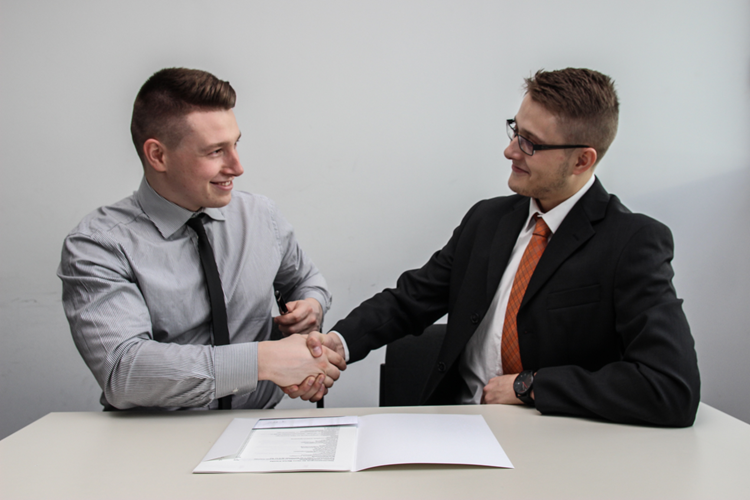Here are 7 steps to getting into wholesale real estate

Real estate investing can be complex, but it can also be highly lucrative. That’s if you know what you’re getting yourself into.
Wholesaling real estate investments is a way for you to purchase and sell real estate contracts without spending too much time and money right off the bat. If done correctly, you can walk away with a solid finder’s fee without ever having to take possession of the property.
But what exactly is wholesale real estate? What are the steps required to get started? And what are the risks to wholesaling real estate?
In this article, we will answer these questions and more. Here is everything you need to know about how to get into wholesale real estate.
What is wholesale real estate?
Wholesale real estate is a short-term real estate investment strategy for investors who find undervalued properties and put them under contract with a seller. Wholesale real estate differs from flipping houses (more on the differences later) in that you do not do any construction or renovation work.
The next buyer then makes the necessary home improvements and can choose to sell the property at a higher price or rent it out. In other words, you as the wholesaler never take possession of the property. Instead, you secure it but then sell the contract.
For a bigger picture view of the real estate profession, read our article on how to get into real estate.
How wholesale real estate works
As a wholesaler, you would first start a wholesale contract or deal with a motivated seller. The motivated seller may want to unload the property for any number of reasons. It could be that the owner is at a risk of foreclosure or wants to sell a distressed property without worrying about fixing it up.
You then look for interested cash buyers (usually real estate investors) who are willing to fix up the property or can pay someone else to do it. Next, you sell the contract to the investor for a transaction fee, which is also known as a spread. This is the bare bones of what a wholesale deal looks like.
Wholesaling real estate vs. house flipping
While wholesaling real estate may sound a lot like house flipping, there is one key difference. Both investment strategies involve buying distressed properties and selling them for a profit. The difference is how this is accomplished.
When you are house flipping, you buy a home that requires some work and spend time fixing the property up. After you have increased the value of the property, you then turn around and sell it for a profit.
With wholesaling real estate, on the other hand, you still purchase a distressed home. However, you do not do any of the work fixing it up yourself. Instead, you charge a wholesale fee to the final buyer. The result is that you earn less money in the wholesale deal, but you also can avoid investing your resources into the property.
How to wholesale houses for beginners
You are an investor, and you want to learn how to wholesale houses. While there are several steps, it does not necessarily have to be overly complicated. It is especially useful to break down each step so that you know what’s required.
Let’s look at how to wholesale houses for beginners:
- Learn wholesaling laws
- Find a distressed property (or a motivated seller)
- Determine a ROI
- Make an offer
- Draw up a contract
- Find a buyer
- Assign the contract
To help simplify the process for you, let’s break down how to get into wholesale real estate.
1. Learn wholesaling laws
When determining how to get into wholesale real estate, you will first need to ensure the process is legal. This requires consulting with an attorney that specializes in real estate law.
Every state has its own laws and regulations surrounding wholesaling real estate. Before you dive in, it is crucial to get advice from an experienced professional.
2. Find a distressed property (or a motivated seller)
Finding motivated sellers of distressed properties is an important early step to making real estate wholesaling work. Motivated sellers usually want to sell the home quickly and want to avoid the normal channels involving real estate agents, lenders, home inspections, and appraisals.
Motivated sellers want to find buyers who will close the property quickly before they go into foreclosure. Because expediency is important, motivated sellers also usually sell the property for less than the market value. That means if you bid a price that is considerably under market value, you should be able to put the home under contract at a higher price. For facilitating the deal, you will make a profit in the form of a finder’s fee.
So how do you find motivated sellers? You can market yourself through social media, direct mail, or even word-of-mouth as a cash buyer of distressed properties.
3. Determine ROI
When determining your return on investment (ROI), you must consider several different factors, which include:
- Local market conditions: This means taking into account the number of buyers and the number of properties for sale. If there are more buyers than properties, you might need to make a higher offer. If there are more properties than buyers, your offer can be lower.
- Compare properties in the same area: To make a proper comparison of different properties within the same area, you can speak with a real estate agent. They should be able to compile a comparative market analysis that shows you the listing and sale prices of local properties in recent months.
- Learn about the property’s history: This can include whether the property has been on the market for months and experienced price reductions. If this is the case, the seller is likely motivated to sell. That may give you, the buyer, more wiggle room to negotiate on asking price.
- Condition of the property: The condition of the property will also play a significant role in determining your ROI. Move-in ready properties usually bring in a higher price than homes that require extensive renos.

4. Make an offer
When making an offer, it is important to ensure you have been pre-approved for a mortgage. Working with an agent will help you finalize the deal. After that, you can begin the negotiation process. As you negotiate the purchase agreement, there are multiple steps that you can take to increase your leverage for a lower purchase price.
At this point, you will propose the conditions of the contract. This includes the offer price, which the seller will either approve, reject, or renegotiate.
Here are some tips to help you negotiate:
- Conduct a home inspection will help you reveal cosmetic or structural issues that may enable you to start with a lower offer
- Request that the seller contribute to any closing costs
- Renegotiate if the seller rejects your offer
5. Draw up a contract
The next step is to sign the purchase agreement, which is a binding contract between seller and buyer that outlines the details of a property sale transaction.
A purchase agreement should stipulate reasons for a buyer backing out of a purchase. Otherwise, you could lose your earnest money deposit if you break the contract, once it’s signed.
6. Find a buyer
To find a buyer for the property you purchased, you must use your network of real estate investors. You can build on that network through events like local real estate functions and through social media. There are many ways to find leads for real estate deals.
After you find the buyer, you then negotiate the price like you did to negotiate the price with the seller. At this point, you also negotiate your transaction fee. This fee can either be for a specific price or a more standard fee.
7. Assign the contract
Finally, you must assign the contract you signed with the seller to the buyer. Essentially, you have to complete the agreement that transfers the contract you signed with the seller to your buyer for the previously agreed-upon amount.
The amount laid out in the contract is the difference between the amount you agreed to pay the seller and the buyer’s agreement to pay you for the property. The buyer agrees to purchase the property and assume possession of it. You, as the seller, agree to accept the fee as stated in the contract. This relinquishes your rights to the property.
What are the cons of real estate wholesaling?
When wholesaling real estate, keep in mind that exit strategies usually come with potential cons or risks. Let’s look at some examples of the cons of real estate wholesaling.
Income not guaranteed
While there are numerous perks, wholesaling real estate does not guarantee a reliable paycheck every two weeks like a normal 9-5 job. It also does not offer retirement benefits or health insurance.
If you want to wholesale real estate full-time, you must know how to manage your finances. One great idea to offset this downside is to set aside a rainy-day fund, in case a deal does not go as planned.
Finding buyers can be challenging
Having a solid buyers list is one of the keys to being a successful wholesaler. Why? Because no buyer means no deal in the world of wholesale real estate. And the way your contract is written can impact your personal risk. You may be forced to repay your seller if you are unable to find a buyer, depending on how much money you put down in escrow.
To overcome this potential downside, you can line up buyers before making an initial offer to the seller.
Remember these tips on how to get into wholesale real estate
While it takes work, wholesaling real estate is a great strategy for savvy stakeholders who want to invest in real estate. And it certainly requires less hands-on work compared to flipping houses. When determining how to get into wholesale real estate, make sure you follow the steps in this article. You will also want to weigh the risks against what you want from your real estate investment.
Remember: when it comes to real estate investing, you can never be too prepared.
Learn What should you study if you want to invest in real estate here.
To find out more about how to get into wholesale real estate, get in touch with one of the mortgage professionals we highlight in our Best in Mortgage section. Here you will find the top-performing mortgage professionals across the USA.
Did you find this information on how to get into wholesale real estate useful? Let us know in the comment section below.



